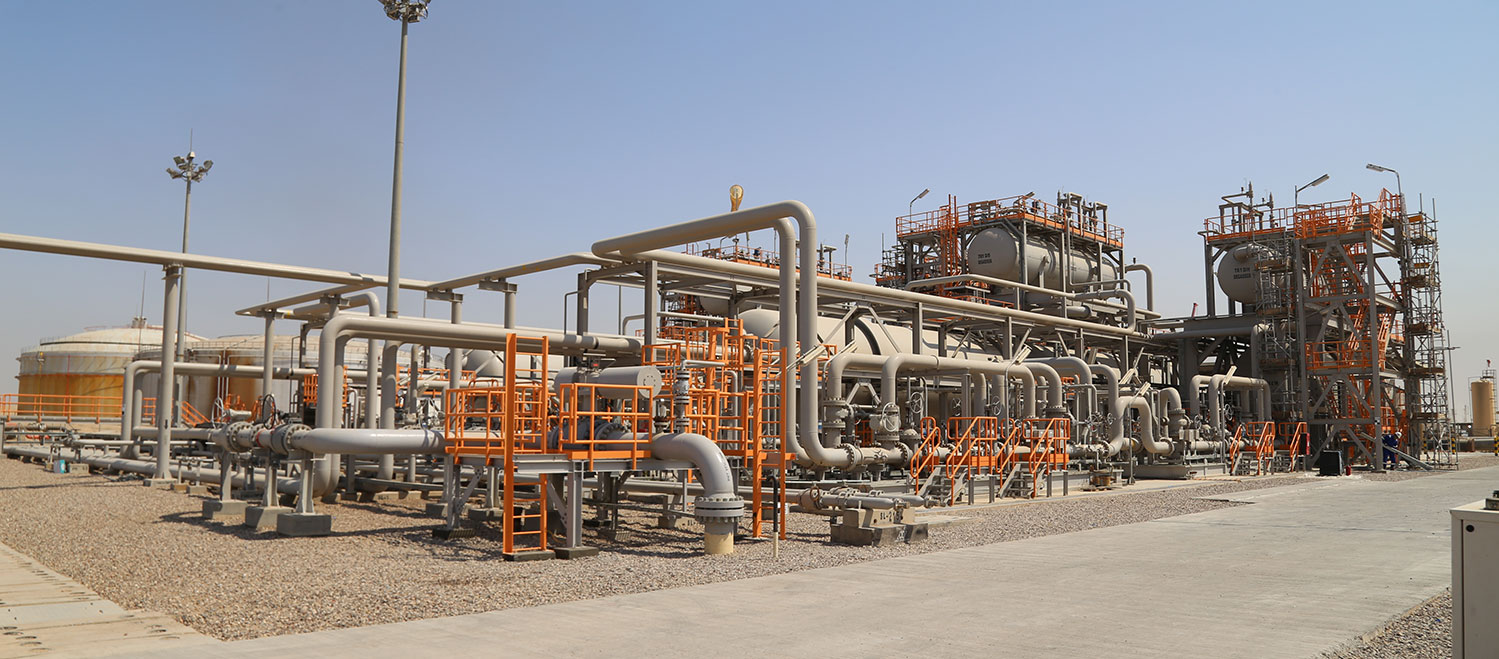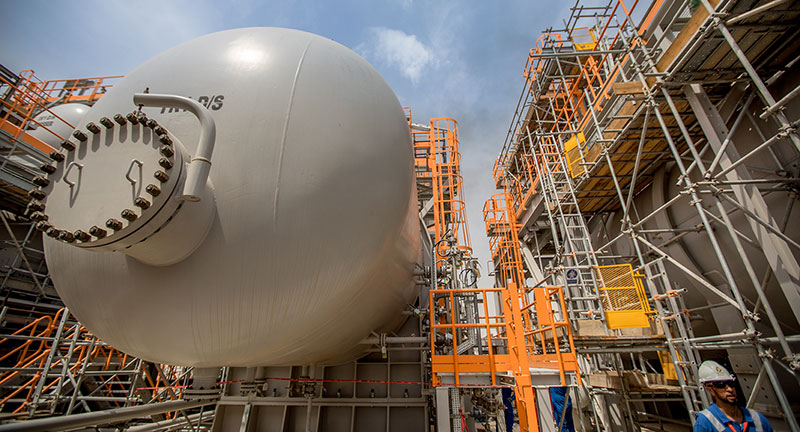
Comprised of two large 44-metre-long desalters and two 14-metre dehydrators, with four smaller degassers that sit atop each of the four vessels, the D&Ds were mechanically completed in April 2018.
Since coming online in August 2018, the D&Ds have increased DS-4’s water handling capability by around 40% and have significantly reduced the level of salt in the oil produced, thereby improving its quality.
Historically, oil that has been processed at DS-4 has always had comparatively high salt levels. With the introduction of the new vessels however, this rate has fallen by over 80%, significantly improving the quality of oil.
With production capability now rising to 300,000 bpd, a new flexline has been installed to pipe 60,000 bpd from DS-5 to DS-4 to fill the new capacity. Travelling 8,300 metres mostly above ground, the installation of the 16-inch pipeline required welding over a thousand joints and navigating 13 road crossings (which took the pipe underground).
Following the introduction of these vessels, new data capture technology has been installed at the station so that staff can access information relating to water and oil analysis in real time, allowing for swift action to be taken if needed. The data is also available to the Operation’s Team based at HQ, meaning the D&Ds are monitored 24 hours a day, seven days a week.
The introduction of DS-4’s D&Ds is only one part of a significant development programme at Rumaila. There are several more sets of D&Ds that will be introduced to facilities across the field in the coming months and years.
